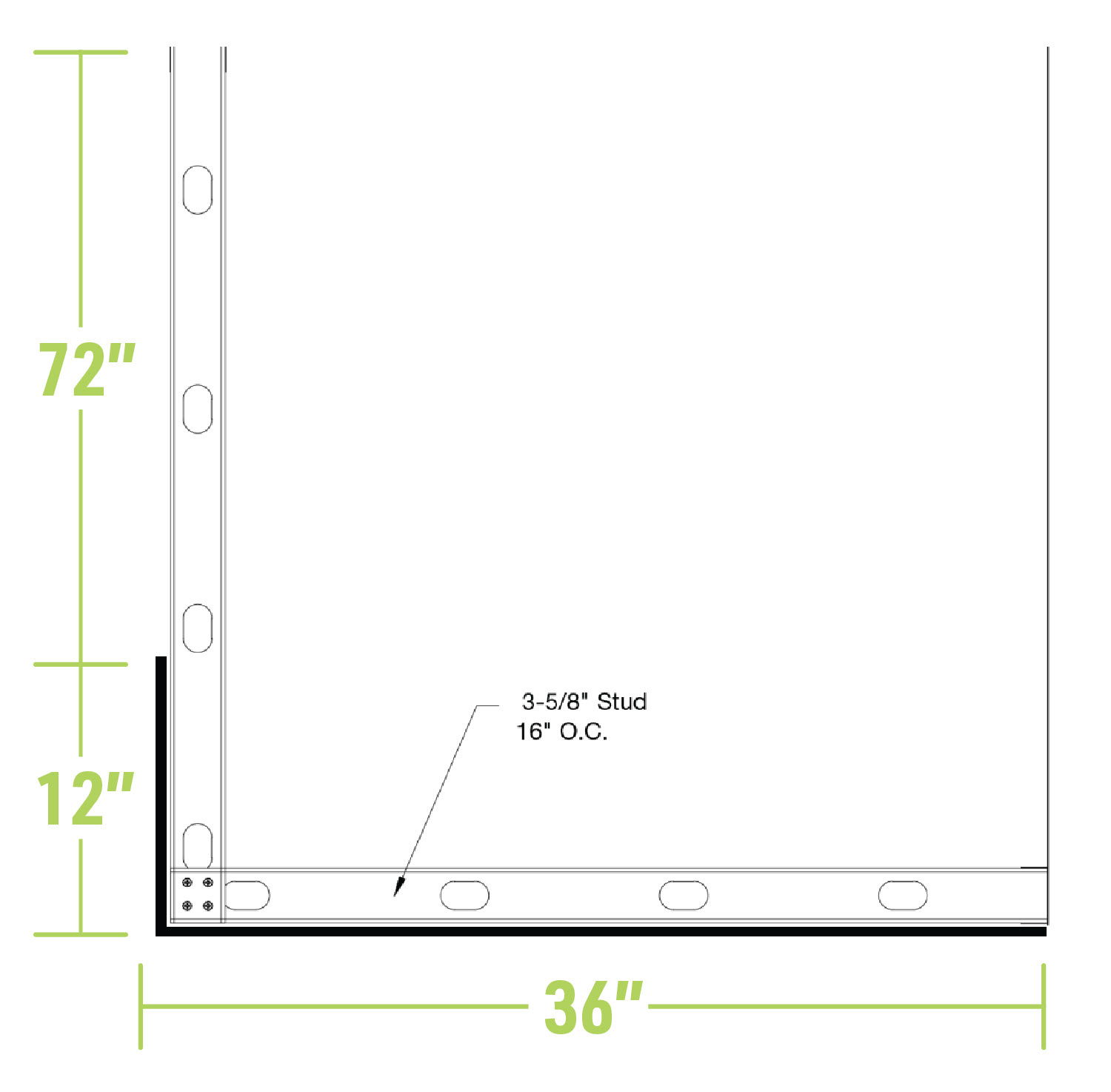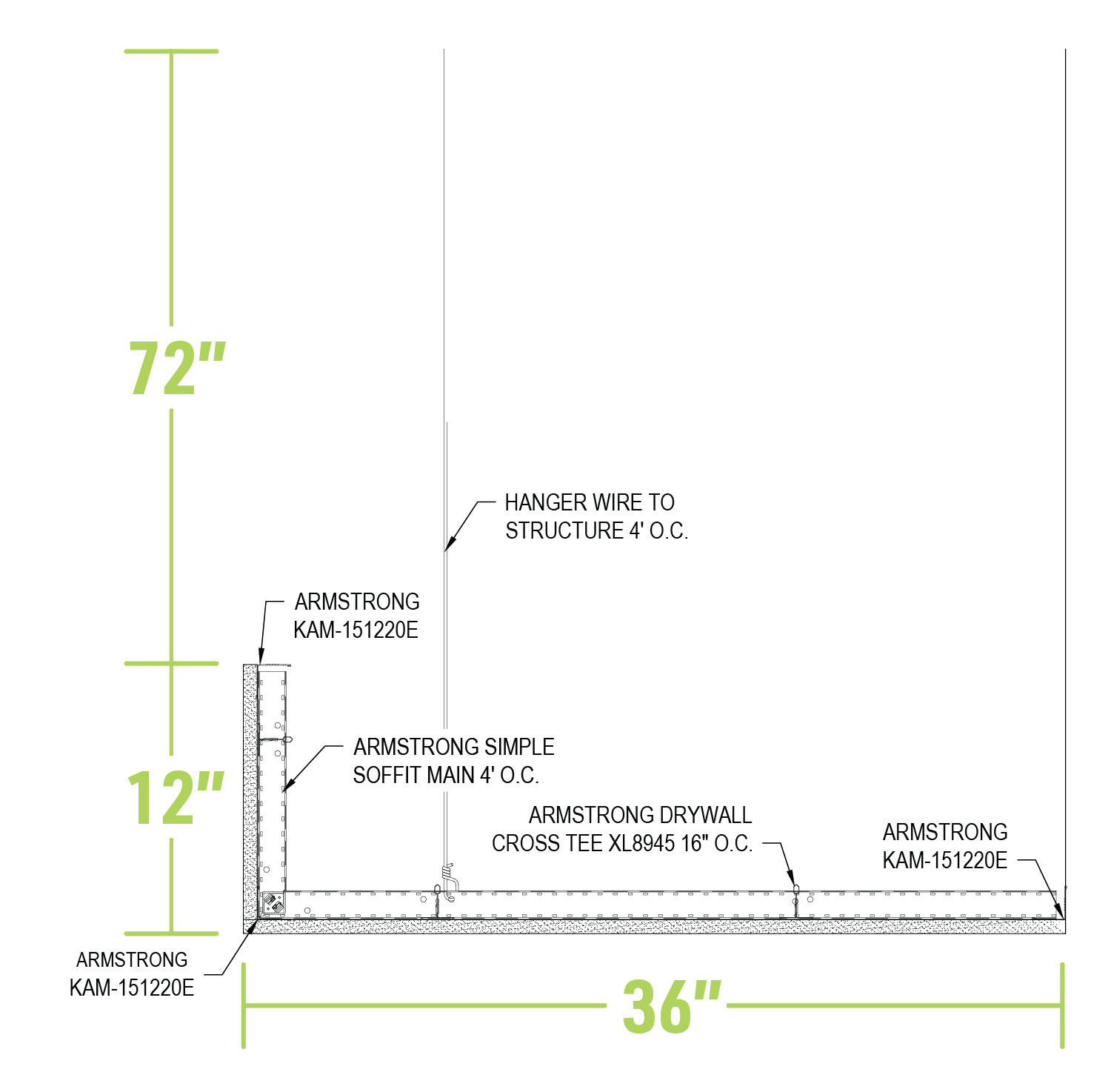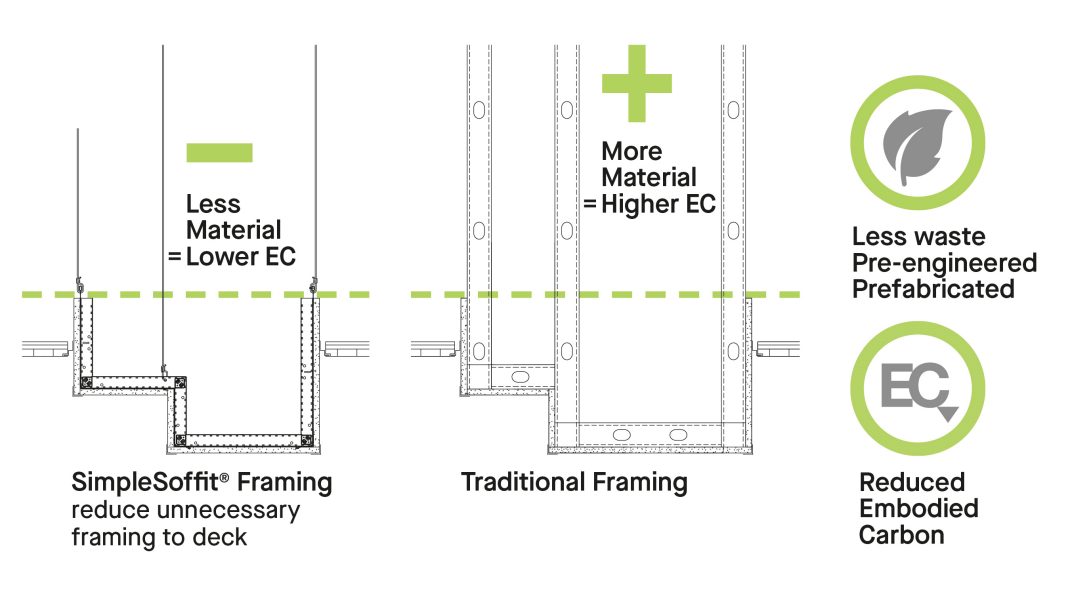A lower carbon footprint is an important factor in sustainable and healthy materials used in the building industry. The majority of a building’s carbon footprint is tied to material and products used in the construction. Product factors that impact embodied carbon are material selection, weight and amount of material, recycled content, and recyclability.
What is Embodied Carbon?
Learn more about it, what you can do, and the solutions available.
Pre-Engineered FRAMEALL Grid System Means Less Material and Waste
Example: 76% Reduction in Embodied Carbon

Traditional steel stud framing
steel studs to deck 16” on center

FRAMEALL SIMPLESOFFIT 90-degree soffit
suspended ceiling with grid 48” on center
